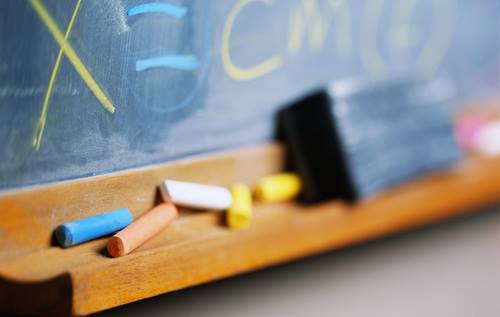What interested her--(and me!) was this comment from Carrie Houtman, a senior analyst at Dow, that was right on the money:
Houtman said universities need to design training programs that meet industry needs and public schools need to prioritize “project-based learning.” At the elementary level, that means book reports, science projects and field trips, she said.I have many years of experience with students at Ann Arbor Open, which has always focused a lot of time on project-based learning, and my observation--comparing my oldest child's experience and my youngest child's experience--is that we've been getting less and less of it lately. More and more testing, less and less hands-on learning. And that's everywhere, not just at Ann Arbor Open. It's not the teachers' fault. It's the fault of testing, which a) takes time from the day--lots and lots of time and b) prioritizes certain types of learning (not the project-based type) over others.
“The reality is these experiences get fewer and farther between as the student progresses, and this shouldn’t be the case,” she said.
Rick Snyder, your own business experts say that's the wrong way to go about things.
The Atlantic has an article, What Americans Keep Ignoring About Finland's School Success (by Anu Partunen), which says:
Finland's schools owe their newfound fame primarily to one study: the PISA survey, conducted every three years by the Organization for Economic Co-operation and Development (OECD). The survey compares 15-year-olds in different countries in reading, math, and science. Finland has ranked at or near the top in all three competencies on every survey since 2000, neck and neck with superachievers such as South Korea and Singapore.And then...
Compared with the stereotype of the East Asian model -- long hours of exhaustive cramming and rote memorization -- Finland's success is especially intriguing because Finnish schools assign less homework and engage children in more creative play.And then...
So there was considerable interest in a recent visit to the U.S. by one of the leading Finnish authorities on education reform, Pasi Sahlberg, director of the Finnish Ministry of Education's Center for International Mobility and author of the new book Finnish Lessons: What Can the World Learn from Educational Change in Finland? . . .
Yet one of the most significant things Sahlberg said passed practically unnoticed. "Oh," he mentioned at one point, "and there are no private schools in Finland."
This notion may seem difficult for an American to digest, but it's true. Only a small number of independent schools exist in Finland, and even they are all publicly financed. None is allowed to charge tuition fees. There are no private universities, either. This means that practically every person in Finland attends public school, whether for pre-K or a Ph.D.
And last but definitely not least...
For starters, Finland has no standardized tests. The only exception is what's called the National Matriculation Exam, which everyone takes at the end of a voluntary upper-secondary school, roughly the equivalent of American high school.
Instead, the public school system's teachers are trained to assess children in classrooms using independent tests they create themselves. All children receive a report card at the end of each semester, but these reports are based on individualized grading by each teacher. Periodically, the Ministry of Education tracks national progress by testing a few sample groups across a range of different schools. As for accountability of teachers and administrators, Sahlberg shrugs. "There's no word for accountability in Finnish," he later told an audience at the Teachers College of Columbia University. "Accountability is something that is left when responsibility has been subtracted."
For Sahlberg what matters is that in Finland all teachers and administrators are given prestige, decent pay, and a lot of responsibility. A master's degree is required to enter the profession, and teacher training programs are among the most selective professional schools in the country. If a teacher is bad, it is the principal's responsibility to notice and deal with it.. . . As Sahlberg continued, his core message emerged, whether or not anyone in his American audience heard it.
Decades ago, when the Finnish school system was badly in need of reform, the goal of the program that Finland instituted, resulting in so much success today, was never excellence. It was equity.
Since the 1980s, the main driver of Finnish education policy has been the idea that every child should have exactly the same opportunity to learn, regardless of family background, income, or geographic location. Education has been seen first and foremost not as a way to produce star performers, but as an instrument to even out social inequality.
In the Finnish view, as Sahlberg describes it, this means that schools should be healthy, safe environments for children. This starts with the basics. Finland offers all pupils free school meals, easy access to health care, psychological counseling, and individualized student guidance.
Read the rest of this article here.
As for us, I wish for 2012:
Less testing, more project-based learning
More emphasis on equity, and less corporate, for-profit, fake educational reform
More support of teachers, more support of students
More parents speaking out.
I realize that I'm not likely to get my wishes, but hey--a woman can dream, right?
Welcome to the world, 2012!

No comments:
Post a Comment